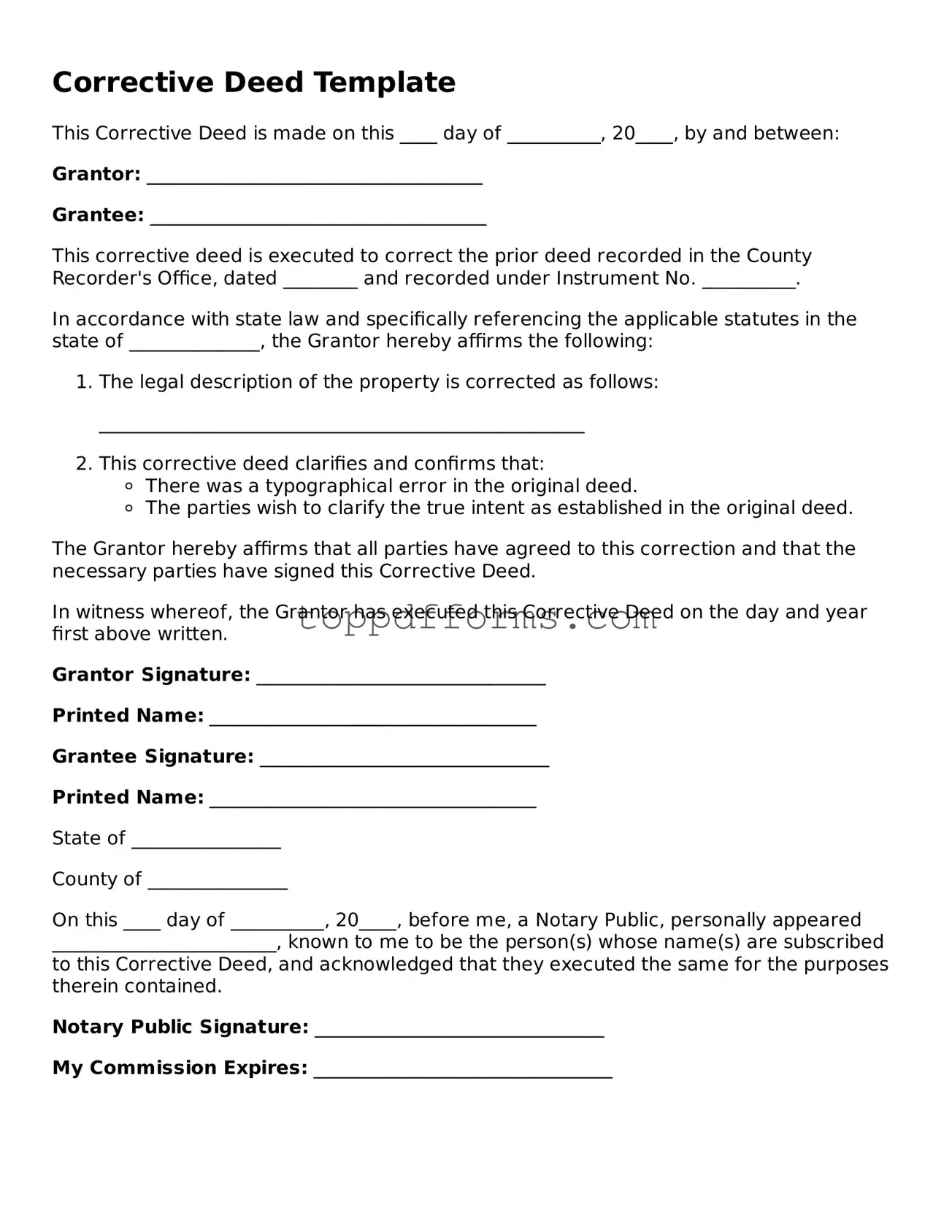Free Corrective Deed Template
A Corrective Deed is a legal document used to amend or correct errors in a previously executed deed. This form ensures that property records accurately reflect ownership and any necessary changes. If you need to update a deed, consider filling out the Corrective Deed form by clicking the button below.
Create This Form Online
